Buhua Liu
A Simple and Efficient Baseline for Zero-Shot Generative Classification
Dec 17, 2024



Abstract:Large diffusion models have become mainstream generative models in both academic studies and industrial AIGC applications. Recently, a number of works further explored how to employ the power of large diffusion models as zero-shot classifiers. While recent zero-shot diffusion-based classifiers have made performance advancement on benchmark datasets, they still suffered badly from extremely slow classification speed (e.g., ~1000 seconds per classifying single image on ImageNet). The extremely slow classification speed strongly prohibits existing zero-shot diffusion-based classifiers from practical applications. In this paper, we propose an embarrassingly simple and efficient zero-shot Gaussian Diffusion Classifiers (GDC) via pretrained text-to-image diffusion models and DINOv2. The proposed GDC can not only significantly surpass previous zero-shot diffusion-based classifiers by over 10 points (61.40% - 71.44%) on ImageNet, but also accelerate more than 30000 times (1000 - 0.03 seconds) classifying a single image on ImageNet. Additionally, it provides probability interpretation of the results. Our extensive experiments further demonstrate that GDC can achieve highly competitive zero-shot classification performance over various datasets and can promisingly self-improve with stronger diffusion models. To the best of our knowledge, the proposed GDC is the first zero-shot diffusionbased classifier that exhibits both competitive accuracy and practical efficiency.
Alignment of Diffusion Models: Fundamentals, Challenges, and Future
Sep 12, 2024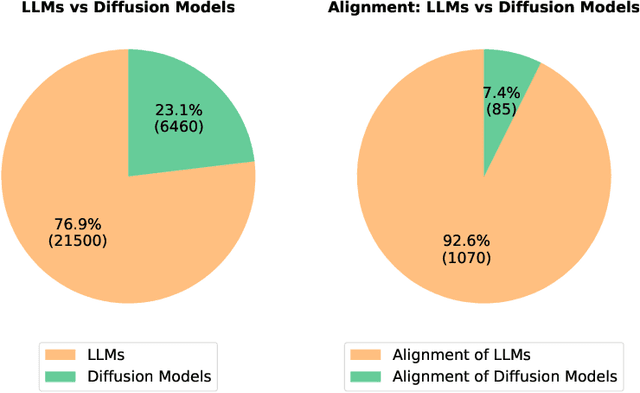
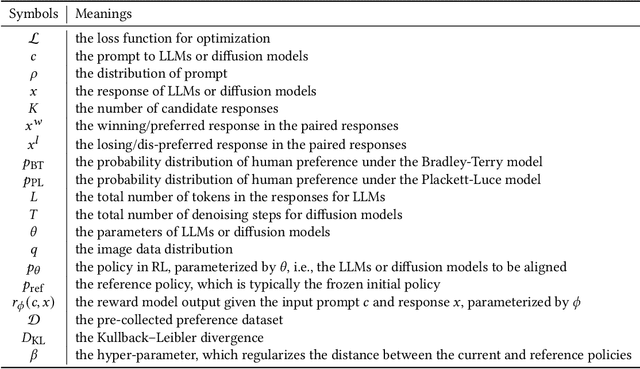
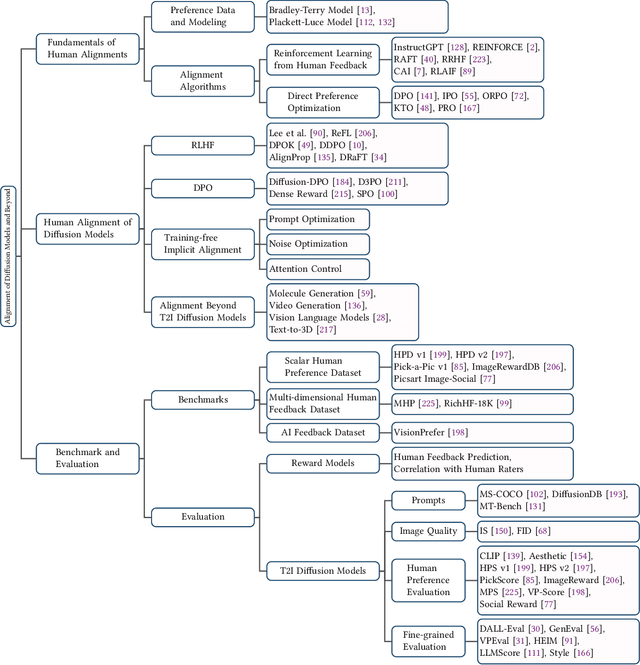
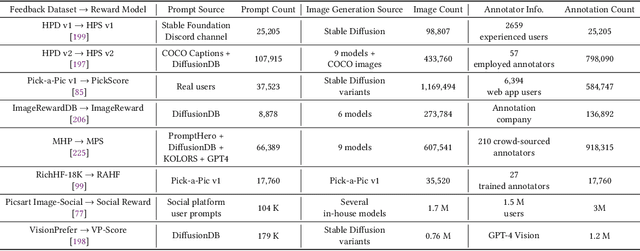
Abstract:Diffusion models have emerged as the leading paradigm in generative modeling, excelling in various applications. Despite their success, these models often misalign with human intentions, generating outputs that may not match text prompts or possess desired properties. Inspired by the success of alignment in tuning large language models, recent studies have investigated aligning diffusion models with human expectations and preferences. This work mainly reviews alignment of diffusion models, covering advancements in fundamentals of alignment, alignment techniques of diffusion models, preference benchmarks, and evaluation for diffusion models. Moreover, we discuss key perspectives on current challenges and promising future directions on solving the remaining challenges in alignment of diffusion models. To the best of our knowledge, our work is the first comprehensive review paper for researchers and engineers to comprehend, practice, and research alignment of diffusion models.
Improve Knowledge Distillation via Label Revision and Data Selection
Apr 03, 2024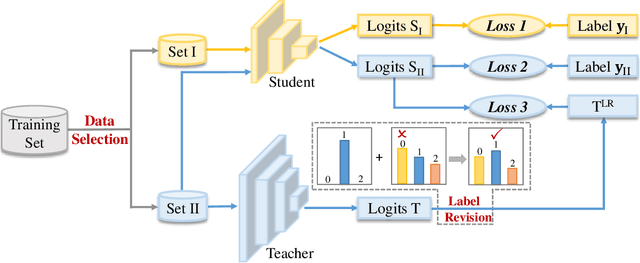
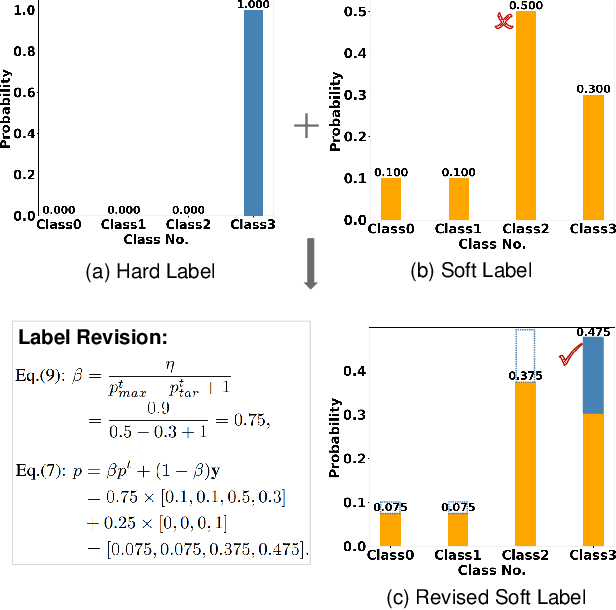
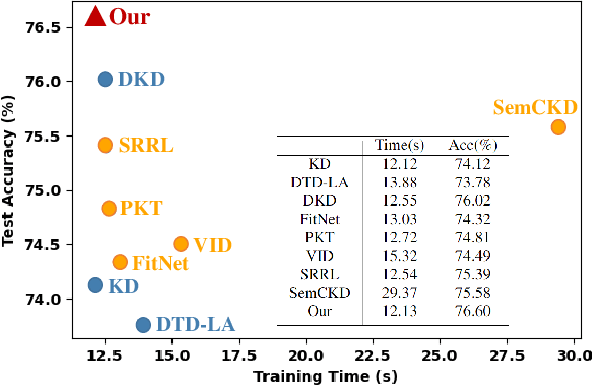
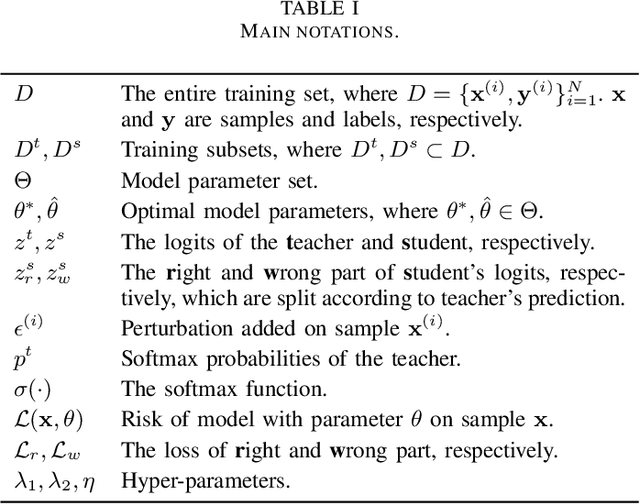
Abstract:Knowledge distillation (KD) has become a widely used technique in the field of model compression, which aims to transfer knowledge from a large teacher model to a lightweight student model for efficient network development. In addition to the supervision of ground truth, the vanilla KD method regards the predictions of the teacher as soft labels to supervise the training of the student model. Based on vanilla KD, various approaches have been developed to further improve the performance of the student model. However, few of these previous methods have considered the reliability of the supervision from teacher models. Supervision from erroneous predictions may mislead the training of the student model. This paper therefore proposes to tackle this problem from two aspects: Label Revision to rectify the incorrect supervision and Data Selection to select appropriate samples for distillation to reduce the impact of erroneous supervision. In the former, we propose to rectify the teacher's inaccurate predictions using the ground truth. In the latter, we introduce a data selection technique to choose suitable training samples to be supervised by the teacher, thereby reducing the impact of incorrect predictions to some extent. Experiment results demonstrate the effectiveness of our proposed method, and show that our method can be combined with other distillation approaches, improving their performance.
Neural Field Classifiers via Target Encoding and Classification Loss
Mar 02, 2024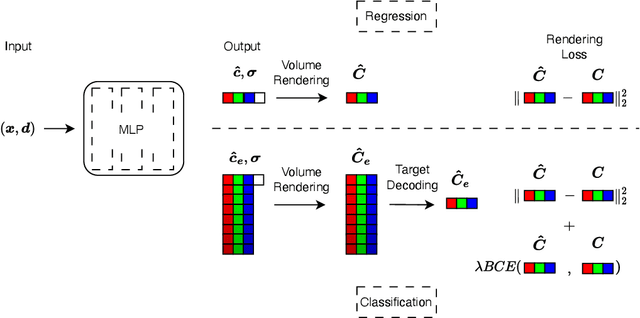
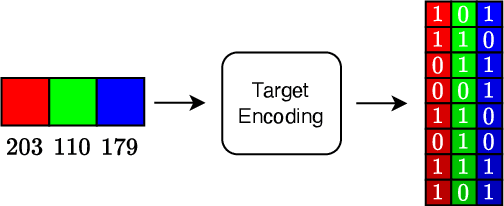
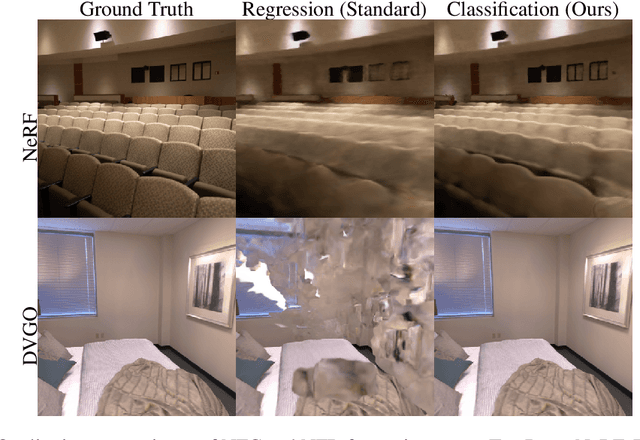
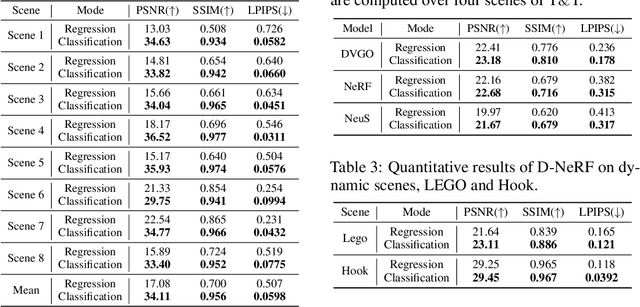
Abstract:Neural field methods have seen great progress in various long-standing tasks in computer vision and computer graphics, including novel view synthesis and geometry reconstruction. As existing neural field methods try to predict some coordinate-based continuous target values, such as RGB for Neural Radiance Field (NeRF), all of these methods are regression models and are optimized by some regression loss. However, are regression models really better than classification models for neural field methods? In this work, we try to visit this very fundamental but overlooked question for neural fields from a machine learning perspective. We successfully propose a novel Neural Field Classifier (NFC) framework which formulates existing neural field methods as classification tasks rather than regression tasks. The proposed NFC can easily transform arbitrary Neural Field Regressor (NFR) into its classification variant via employing a novel Target Encoding module and optimizing a classification loss. By encoding a continuous regression target into a high-dimensional discrete encoding, we naturally formulate a multi-label classification task. Extensive experiments demonstrate the impressive effectiveness of NFC at the nearly free extra computational costs. Moreover, NFC also shows robustness to sparse inputs, corrupted images, and dynamic scenes.
ChildPredictor: A Child Face Prediction Framework with Disentangled Learning
Apr 21, 2022

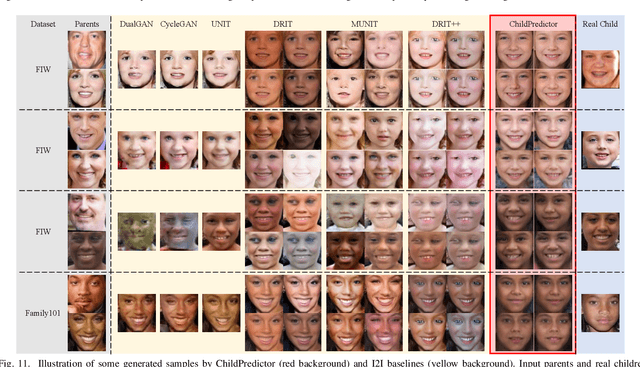

Abstract:The appearances of children are inherited from their parents, which makes it feasible to predict them. Predicting realistic children's faces may help settle many social problems, such as age-invariant face recognition, kinship verification, and missing child identification. It can be regarded as an image-to-image translation task. Existing approaches usually assume domain information in the image-to-image translation can be interpreted by "style", i.e., the separation of image content and style. However, such separation is improper for the child face prediction, because the facial contours between children and parents are not the same. To address this issue, we propose a new disentangled learning strategy for children's face prediction. We assume that children's faces are determined by genetic factors (compact family features, e.g., face contour), external factors (facial attributes irrelevant to prediction, such as moustaches and glasses), and variety factors (individual properties for each child). On this basis, we formulate predictions as a mapping from parents' genetic factors to children's genetic factors, and disentangle them from external and variety factors. In order to obtain accurate genetic factors and perform the mapping, we propose a ChildPredictor framework. It transfers human faces to genetic factors by encoders and back by generators. Then, it learns the relationship between the genetic factors of parents and children through a mapping function. To ensure the generated faces are realistic, we collect a large Family Face Database to train ChildPredictor and evaluate it on the FF-Database validation set. Experimental results demonstrate that ChildPredictor is superior to other well-known image-to-image translation methods in predicting realistic and diverse child faces. Implementation codes can be found at https://github.com/zhaoyuzhi/ChildPredictor.
 Add to Chrome
Add to Chrome Add to Firefox
Add to Firefox Add to Edge
Add to Edge